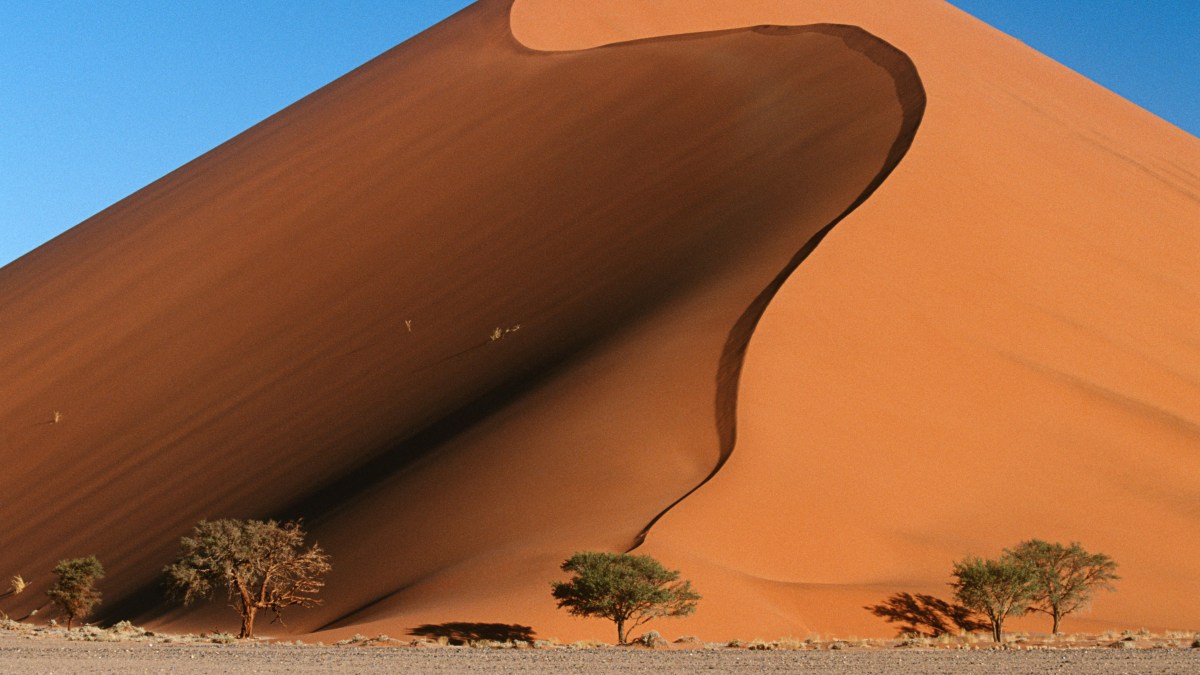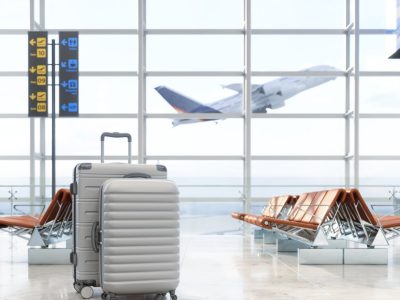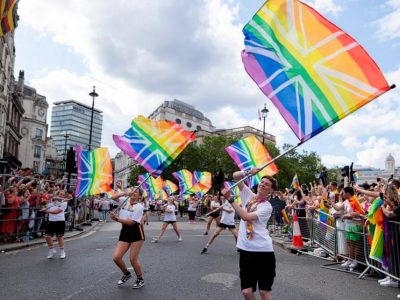We had been on the road for more than six hours, on one of the most visually bombastic drives of our lives, when we realised we were in trouble. Looming on both sides of the car, the rocky Nubibberge and Tsarisberge mountains were darkening, and a candy floss sunset was creeping across the sky. Night was falling. This was not good.
Hadn’t we had it hammered home at the car hire place in Windhoek that, so dangerous is it, we should not ever, whatever the circumstances, drive after dark? At night animals lie on the sun-warmed roads; hit one, or swerve to avoid it, and you might spin off the road or flip the car. And in a desert the size of England, it could be a while before anyone finds you.
We were driving into the NamibRand Nature Reserve, a private conservation area within the great Namib Desert, which stretches for 1,200 miles along the west coast of Namibia, and we should have been at our wilderness lodge by now. It was day two of our family 4×4 self-drive road trip across the country, and I was just starting to comprehend the monumental journey ahead.
The year before we had our first baby, my partner and I had wanted a final big adventure; a toss-up between trekking in Bhutan and overlanding with a rooftop tent in southern Africa. Bhutan won out (no regrets, it was enchanting), but an itch had lingered unscratched through a decade of child-rearing. Now, with the youngest nearly eight, we were finally off on our first long-haul family trip, flying overnight to Windhoek, then collecting our truck-like Toyota Hilux just outside the small city and heading south.

Our ten-day loop in and out from Windhoek would take in some of the many incredible wilderness lodges that have opened in recent years, along with cheaper guesthouses — but not, this time, the campsites for those in rooftop tents (it’s a bit hot in March, with temperatures in the 30Cs in some places). It was only as the car hire guy showed us various emergency features — “use this to jack up the car . . . undo that to drop the spare . . . this depressurises tyres if you’re stuck in sand” — that nerves crept in.
Now, as darkness fell on the desolate gravel road, stars stippling the sky, it dawned on me that the pencil circle on the map indicating the lodge we were now desperate to reach had been drawn by my seven-year-old son using Google Maps before we left. In the mad rush (always the way with family trips when you’re trying to locate head torches and 25 pairs of socks), we’d forgotten to verify the locations, and now needed to take an (albeit incredible) extra two hours’ driving into account.
Leaving the city, the green bush had given way to rocky escarpments and dry canyons reminiscent of Death Valley, then opened out onto the golden desert, gilded by the late afternoon sun, and the sense of space overwhelming. We’d pulled over to take photos by a Tropic of Capricorn sign like backpackers, and made a U-turn so both children could get a good look at a baboon sitting on a bin. Thanks to my Namibian wildlife book I’d identified weaver birds, a black-chested snake eagle and a Rüpell’s korhaan — I had turned twitcher in less than 24 hours. There had been a haunting moment when a black-backed jackal sped out in front of the car then raced alongside us, legs a blur keeping pace as the speedometer hit 40mph.

Sesriem Canyon near Sossusvlei
ALAMY
Night had truly fallen by the time we reached Kwessi Dunes, opened in 2019 by the safari lodge operator Natural Selection and one of only a handful in the privately owned NamibRand Nature Reserve. At the sign, we turned off the gravel road then engaged four-wheel drive for the final 20 minutes across the sand, the lights of the lodge beckoning.
The staff were as relieved as we were. “We thought you’d be here for quad biking at 5pm. We’ve been calling around to see if anyone could find you!” Dinner was served under the stars on a deck where a snooping jackal occasionally slunk up from the sands, over which boardwalks stretched to 12 elegant, thatched-roof chalets.
In the morning we joined an organised game drive with another English family, passing mysterious “fairy circles”, where nothing grows. “No one knows what causes them,” said our guide, Filip Namangushe. “No new ones form, they don’t disappear, and if you move the same sand elsewhere, plants will grow in it.” Theories have blamed underground termites, wind, fungi and aliens, but research remains inconclusive.

Kwessi Dunes Lodge, one of only a handful in the NamibRand Nature Reserve
EXPERT AFRICA
Distant dots gradually took shape as we drove closer, revealing themselves as flamboyant ostriches, zebras and herds of oryxes, Namibia’s national animal, as chic in dove grey and monochrome as if designed in a Christian Lacroix-Philip Treacy collaboration, with theatrical spiral horns. Cleverly adapted to their arid habitat, they urinate only toxins, not water, and have nasal passages that cool the blood on its way to the brain.
We watched more oryxes later from the cold swimming pool, drifting across the desert to drink at a trough near the sundeck, sometimes clashing horns. Water comes from a borehole and electricity is solar, so the lodge, like most here, is low impact, typical of the country’s well-managed tourism industry. For sunset, Namangushe drove us back into the desert to Bushman’s Rock, one of the inselbergs — island mountains — that rise out of the sand sea. He arranged chairs and platters of nuts and biltong beside an outcrop of boulders, orange and round like giant baked beans, and poured beers, Cokes and G&Ts as we were blasted by hot wind.
• Namibia travel guide: What to do, where to stay and why you’ll love it
After a post-prandial stargazing lesson back at the lodge, my son and I retreated to our outdoor sky bed in a walled terrace connected to our room. Bright as strip lighting, the Milky Way spread overhead, its spiral nebulae clear. A fat bat flew over, making us jump for each other, and at 3am, jackals howled close by, but we only half woke.

Gemma’s kids on the dunes
Though its vast, empty landscapes are enough to induce agoraphobia, we soon discovered Namibia is a surprisingly easy place around which to drive. Dotted throughout wilderness areas are smart lodges, and though you might do five hours on a gravel road without seeing another car, when you finally pull up for the night, you can expect good food (grilled meats and roasted veggies with rice, pepped up with local spice), lovely service (staff often performed beautiful songs after dinner), a gorgeous room and a cool drink as you open the car door. Some are on private game reserves — our first night was at Kalahari Red Dunes Lodge, where chalets are set around a waterhole visited by elands and wildebeest, and giraffes are visible in the bush beyond. Later, at the end of our trip, we stayed at Okonjima, east of Windhoek, where the 54,000-acre fenced reserve is home to the AfriCat research project. Here, after two hours of tracking with a guide, we spent 20 magical minutes at sundown watching a leopard silently stalk a herd of antelopes.
After Kwessi, we drove 90 minutes to Dead Valley Lodge at Sesriem, the nearest accommodation to the famous dunes of Sossusvlei. This meant we could enter the park as soon as it opened, so we set out before dawn, driving along the dead-end road that runs west into the sands for 40 miles, flanked on both sides by dunes several hundred metres high, their contours taking form and colour — crimson, straw and dried apricot — as the sun rose.

Dead Valley Lodge, one of the closest places to stay to the orange dunes of Sossusvlei
EXPERT AFRICA
We let the children run ahead up the highest “Big Daddy” dune, and it was strange to see them confidently moving through this huge desert. From high on the dune, we dropped down to the side, the children running barefoot through sand as soft as powdered milk, leaping and sliding until we reached the jigsaw-cracked mud of Dead Vlei. This is perhaps the country’s most famous site: the ghost of an ancient lake where millennia-old skeletal and blackened trees, which died and burnt in the sun before they could decompose, have provided an eerie backdrop to thousands of selfies. We poured sand from our trainers and my daughter begged to be able to take a shoeful back to do the same at school; I had to repeat the old adage about taking only photos, leaving only footprints.
Interminable desert, furnace-hot winds — that was life now. So it was discombobulating to arrive, after a six-hour drive across pancake-flat desert, in Swakopmund, a sea-misted town on the Atlantic coast where Germany’s colonial legacy lingers in bierkellers and Bavarian-style architecture. Across the country, the colonists tricked tribespeople into selling their land, paving the way for a full invasion, occupation (from 1884 to 1915, when the country was called German South West Africa), and a genocide Germany has since admitted, promising in 2021 to deliver almost £1 billion in financial aid.

We stayed at the Cornerstone Guesthouse, where the garden fluttered with tiny common waxbills and rosy-faced lovebirds. Inside, lacy doilies and vases of lavender replaced the usual kudu horns and cacti. We ignored recommendations to go sandboarding or kayaking with seals (the children vetoed further driving) and played Frisbee on the beach, ate schnitzel and goggled at gargantuan crystals — including the world’s largest cluster of quartz — in the Kristall Galerie museum (kristallgalerie.com). It felt like a holiday from our desert holiday, cool enough for a fleece, a homely yet surreal blip before returning to the grit of the highway.
Despite occasional complaints about the long journeys, our car was a happy bubble, maintained by unfamiliar biscuits and the audiobooks of Anthony Horowitz’s teen spy series, Alex Rider. Every road was a lonely road — no surprise in one of the world’s most sparsely populated countries (8 people per square mile, compared with 720 in the UK). Hours passed between hardscrabble towns where the petrol station was often the only place of interest. But it was the huge open spaces that we’d come for.
We skimmed the southern Skeleton Coast, turning east into mining country, where we stopped at a roadside crystal stall. We ended up agreeing to give a lift to a young stallholder so she could go shopping in the nearest town. Her name was Only Mine, she said, so called by her mother because her father rejected her, and she lived in a tent by the stall with her grandmother. The children were utterly captivated by her. Then we drove towards the northwest’s remote Kunene (or Damaraland) region, passing stalls run by Himba women, who paint their bodies with red ochre, and Herero women in floor-length gowns.
Many tourists go north to Etosha National Park, an enormous game reserve that all but guarantees animal sightings. Instead we went into the rocky desert of Damaraland, where our next lodge, Doro Nawas, eventually appeared on the horizon, a fortress-like building on an outcrop of rock. In the morning we saw the incredible ancient rock petroglyphs at Twyfelfontein, then visited the fascinating Damaraland Living Museum, a re-creation of a village where people would have lived hundreds and possibly thousands of years ago, built by the descendants of those hunter-gatherers (£6; lcfn.info/damara). Here they demonstrate their traditions, games and bush remedies (elephant dung poultices for achy knees), sitting on the mud floors under thatched roofs to explain them in their syncopated language, which uses clicks of the tongue. Translating for us was a charming lad named !gari //Naobeb (the punctuation represents clicks), dressed in skins, but whose tattoo of the American slang word “Dawg” on one shoulder showed how much life has changed here.

Desert elephants at Doro Nawas
EXPERT AFRICA
Late that afternoon, we set off along a dried-up riverbed, driven in an open 4×4 by the guide Bons Roman. We saw baboons and giraffes, acacias and camel-thorn bushes, but not a sign of what we’d come for — wild, desert-adapted elephants. For two hours we searched, Roman scanning the ground for footprints and dung; finding both, but neither fresh. The afternoon winds were getting up, plastering us with sand; the children were getting tired, Roman seemed stressed. Then finally he smiled and pointed at some prints — “That’s what I’m looking for!” — and beyond a sand bank, in an isolated thicket, we saw them: a family of four, with a baby not a month old getting unsteadily to its feet after a nap. For an enchanting hour we watched them, and then others nearby, a dozen in all. Knowing that they were totally wild, unconstricted by any fence, made it all the more special.
We’ve been home a few weeks now, and the children seem more worldly-wise. The sense of independence from travelling between such very different places, 1,000 miles under our own steam, was life-affirming and confidence-boosting for us all. When people ask them what they most remember, my son mentions the elephants (and drinking 15 Cokes in 10 days); my daughter tells how we gave a ride to a Damaraland woman in the desert. Something about the intimacy of shared space with a very different sort of person lodged with her — fascination, a little trepidation: the feelings a big adventure should inspire.
Gemma Bowes was a guest of Expert Africa, which has ten nights’ half-board (excluding one dinner) from £11,168 for a family of four, including two adults and two children under the age of 12, 11 days’ car hire, some extra meals and some activities. It includes two nights each at Kwessi Dunes, Dead Valley Lodge, Cornerstone Guesthouse and Doro Nawas, and one night each at Kalahari Red Dunes Lodge and Okonjima Bush Camp (expertafrica.com). Fly to Windhoek via Frankfurt
Become a subscriber and, along with unlimited digital access to The Times and The Sunday Times, you can enjoy a collection of travel offers and competitions curated by our trusted travel partners, especially for Times+ members
Sign up for our Times Travel newsletter and follow us on Instagram and X










